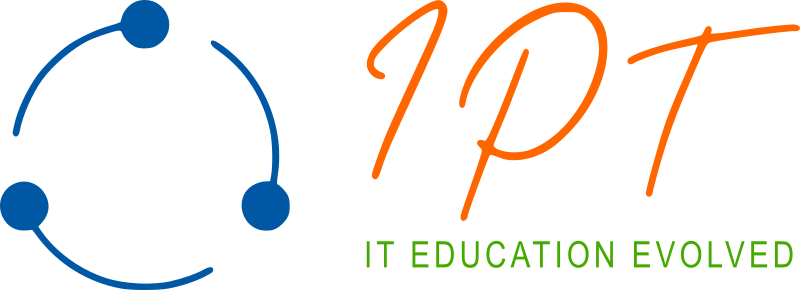“Usability is not everything. If usability engineers designed a nightclub, it would be clean, quiet, brightly lit, with lots of places to sit down, plenty of bartenders, menus written in 18-point sans-serif, and easy-to-find bathrooms. But nobody would be there. They would all be down the street at Coyote Ugly pouring beer on each other.”
— Joel Spolsky
Schedule and Enrollment
Duration: 36 study hours. Price: 295 leva

Target audience:
Web application designers and developers with practical experience in HTML5, CSS3 and JavaScript.
Workshop duration
Duration of the workshop is 36 study hours in total.
Workshop Description:
What factors constitute a good design – this million dollar question has been discussed by designers, developers, marketing specialists for ages. Different hype words have come and gone – human computer interaction (HCI) had to be “user friendly” (whatever should this mean), later “easy to use (usable)”, and now the focus shifted on broader context of what experience user cognitively constructs while acquiring, learning to use, and practically employing a product or service. As stressed by user experience (UX) gurus like Zoltán Gócza:
Designing for the user experience has a lot more to it than making a product usable. Usability allows people to easily accomplish their goals. UX design covers more than that, it’s about giving people a delightful and meaningful experience. A good design is pleasurable, thoughtfully crafted, makes you happy, and gets you immersed. Think of games, they usually have these characteristics. Or think of the iPhone that makes even failures more enjoyable than succeeding on a Blackberry
The workshop provides in-depth study of different factors influencing the user experience (usability being one of them) under the broader concept of User Centered Design (UCD). Tips for designing effective UX by leading practitioners are provided together with practical examples of their use. The main topics that will be covered during workshop are:
- What is User Experience? Rules for effective UX – main concepts, practices and rules: UX, Usability and User Centered Design (UCD), Customer Experience (CX), agile UX, lean UX, strategic UX, guerrilla research, Emotional design. Elements of User Experience: User Research, Information Architecture (IA), Interactions Design (IxD), Visual design, Usability. (3 study h.)
- Methods for designing concepts.Needs and goals – need statement, objectives tree, functional analysis. Concept Development – free listing, metaphor brainstorming, braindrawing, brainwriting,morphological chart, Concept Fan, TRIZ,card sorting, function allocation, parallel design, physical ergonomics, prototyping methods, storyboard, wireframe, participatory design. Concept evaluation – sketch concepts, evaluation matrices. Exercises. (5 study h.)
- Research. User Research methods – Context of Use Analysis, Contextual Inquiry, Longitudinal Study, Ethnographic, Cultural Probe, Participant Observation, Field Study, Diary Study, Photo Study, Phone Interview, Focus groups, User Segmentations and Personas. Requirements gathering methods – User Scenarios & Personas, User Stories, Use Case + UML Activity Diagrams (flowcharts), Affinity Diagramming (clustering of ideas), Claims Analysis, Future Workshop, Quality Function Deployment & Stakeholder Interview, Cognitive Models. Practical user and requirements modeling exercises. (6 study h.)
- User Centered design. Information and interaction architectures. The elements of user experience in depth [Garrett] – surface, skeleton, structure, scope, strategy. Strategy – product objectives and user needs. Scope – defining scope: functional and content requirements. Structure – Information Architecture (IA) & Interactions Design (IxD). Skeleton – metaphors, interface, navigation and information design, wireframes and mockups. Surface – senses and cognitive processes, eye movement patterns, similarity and contrast, consistency (internal, external), colors and typography, styles. Information Architecture modeling – content classification and organization structure, sitemaps, etc. Interaction & Navigation modeling – Cognitive/Hierarchical Task Analysis, Actions & Work-flows, Paths. Microinteractions. UI design patterns and antipatterns. Mobile UX. Prototyping methods – practical exercises using myBalsamiq / inVision. (7 study h.)
- Ux/UI of forms and dialogs using Google Material Design specification – practical implementation exercises using Polymer and Facebook React / Angular 2 JS libraries. (6 study h.)
- Usability tests. UI/ UX Testing and Evaluation methods – 4 types of methods: usability inspection methods, usability testing with users, evaluate usage of an existing system, questionnaire and survey methods. Usability testing and tools. Selected techniques: Expert Evaluation, Heuristic Evaluation, Usability Audits, Benchmark Testing, Competitive Usability Testing, Summative Usability Testing, Wizard of Oz, Quality Assurance Testing, Surveys & Interviews (Rating Scales, Satisfaction Questionnaire, System Usability Scale – SUS), Focus groups, Hallway testing, Direct / Remote observation & Thinking Aloud, Acceptance testing, Alpha-Beta testing, Controlled experiments, Critical Incident Technique (CIT), User Edit, Web Analytics, Google Analytics, Clickstream monitoring, Eye Tracking, Screen capturing (Inspectlet), Heat maps (Crazy Egg), Usage patterns (Mixpanel), A/B Tests (Optimizely), Remote User Testing (Lookback.io), etc. (6 stydy h.)
- Trends and inspirations. General (holistic) UX design process methods – Lean UX (Concept – Prototype – Validate Internally – Test Externally – Learn from User Behavior – Iterate), Agile UX = UX Design + Agile Practices. Case study: using Lean UX @ Paypal. Strategic UX, Customer Experience (CX), Emotional design. (3 study h.)
Selected methods will be tried in practice by workshop participants divided in teams, and playing the role of UX designers developing new web-based product/ service. In order the user experience during UX workshop to be at best 🙂 the whole development lifecycle will be gamified: define (users, requirements) – conception (analysis, syntheses, wireframing) – observation (& point of view) – design (information, interaction, visual, accessibility) – prototyping – testing Usability/UX – enhancing – iteration.
During the workshop several web based prototyping tools and JavaScript UI implementation libraries will be employed: inVision / myBalsamiq, Polymer, Facebook React. Optionally, based on time available, UX design using Angular 2 can also be previewed.
The training and teamwork will be conducted in small group based on practical assignments. During whole workshop there will be opportunity for individual advises, as well as discussion of additional questions the participants are interested in.
 See the detailed program as PDF (in new browser tab).
See the detailed program as PDF (in new browser tab).
For more information and enrollment contact us by e-mail : office@iproduct.org



